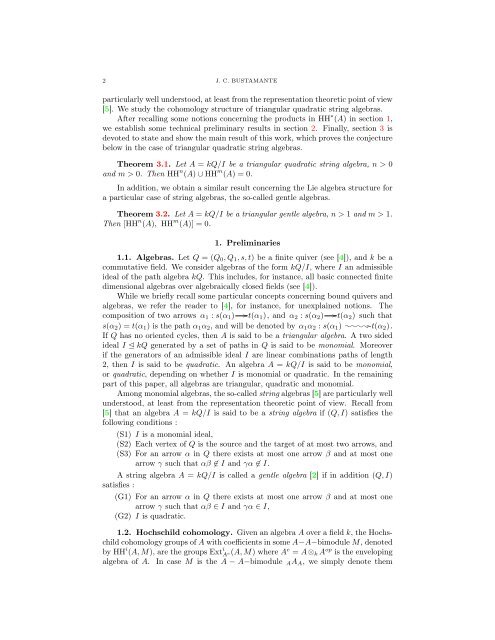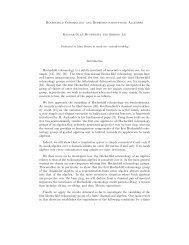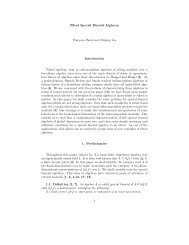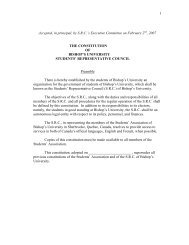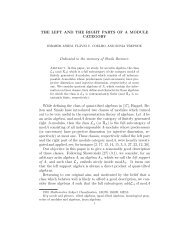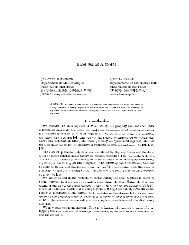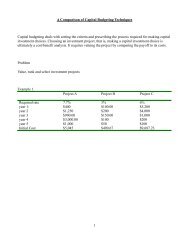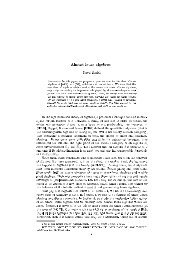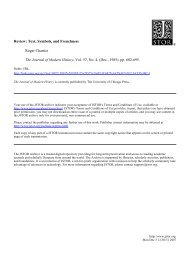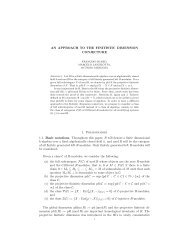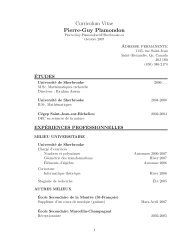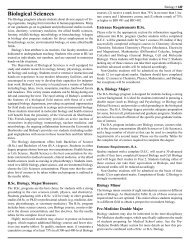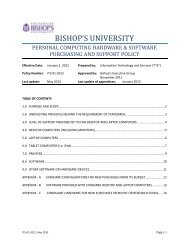The cohomology structure of string algebras
The cohomology structure of string algebras
The cohomology structure of string algebras
You also want an ePaper? Increase the reach of your titles
YUMPU automatically turns print PDFs into web optimized ePapers that Google loves.
2 J. C. BUSTAMANTE<br />
particularly well understood, at least from the representation theoretic point <strong>of</strong> view<br />
[5]. We study the <strong>cohomology</strong> <strong>structure</strong> <strong>of</strong> triangular quadratic <strong>string</strong> <strong>algebras</strong>.<br />
After recalling some notions concerning the products in HH ∗ (A) in section 1,<br />
we establish some technical preliminary results in section 2. Finally, section 3 is<br />
devoted to state and show the main result <strong>of</strong> this work, which proves the conjecture<br />
below in the case <strong>of</strong> triangular quadratic <strong>string</strong> <strong>algebras</strong>.<br />
<strong>The</strong>orem 3.1. Let A = kQ/I be a triangular quadratic <strong>string</strong> algebra, n > 0<br />
and m > 0. <strong>The</strong>n HH n (A) ∪ HH m (A) = 0.<br />
In addition, we obtain a similar result concerning the Lie algebra <strong>structure</strong> for<br />
a particular case <strong>of</strong> <strong>string</strong> <strong>algebras</strong>, the so-called gentle <strong>algebras</strong>.<br />
<strong>The</strong>orem 3.2. Let A = kQ/I be a triangular gentle algebra, n > 1 and m > 1.<br />
<strong>The</strong>n [HH n (A), HH m (A)] = 0.<br />
1. Preliminaries<br />
1.1. Algebras. Let Q = (Q 0 , Q 1 , s, t) be a finite quiver (see [4]), and k be a<br />
commutative field. We consider <strong>algebras</strong> <strong>of</strong> the form kQ/I, where I an admissible<br />
ideal <strong>of</strong> the path algebra kQ. This includes, for instance, all basic connected finite<br />
dimensional <strong>algebras</strong> over algebraically closed fields (see [4]).<br />
While we briefly recall some particular concepts concerning bound quivers and<br />
<strong>algebras</strong>, we refer the reader to [4], for instance, for unexplained notions. <strong>The</strong><br />
composition <strong>of</strong> two arrows α 1 : s(α 1 ) t(α 1 ), and α 2 : s(α 2 ) t(α 2 ) such that<br />
s(α 2 ) = t(α 1 ) is the path α 1 α 2 , and will be denoted by α 1 α 2 : s(α 1 ) t(α 2 ).<br />
If Q has no oriented cycles, then A is said to be a triangular algebra. A two sided<br />
ideal I kQ generated by a set <strong>of</strong> paths in Q is said to be monomial. Moreover<br />
if the generators <strong>of</strong> an admissible ideal I are linear combinations paths <strong>of</strong> length<br />
2, then I is said to be quadratic. An algebra A = kQ/I is said to be monomial,<br />
or quadratic, depending on whether I is monomial or quadratic. In the remaining<br />
part <strong>of</strong> this paper, all <strong>algebras</strong> are triangular, quadratic and monomial.<br />
Among monomial <strong>algebras</strong>, the so-called <strong>string</strong> <strong>algebras</strong> [5] are particularly well<br />
understood, at least from the representation theoretic point <strong>of</strong> view. Recall from<br />
[5] that an algebra A = kQ/I is said to be a <strong>string</strong> algebra if (Q, I) satisfies the<br />
following conditions :<br />
(S1) I is a monomial ideal,<br />
(S2) Each vertex <strong>of</strong> Q is the source and the target <strong>of</strong> at most two arrows, and<br />
(S3) For an arrow α in Q there exists at most one arrow β and at most one<br />
arrow γ such that αβ ∉ I and γα ∉ I.<br />
A <strong>string</strong> algebra A = kQ/I is called a gentle algebra [2] if in addition (Q, I)<br />
satisfies :<br />
(G1) For an arrow α in Q there exists at most one arrow β and at most one<br />
arrow γ such that αβ ∈ I and γα ∈ I,<br />
(G2) I is quadratic.<br />
1.2. Hochschild <strong>cohomology</strong>. Given an algebra A over a field k, the Hochschild<br />
<strong>cohomology</strong> groups <strong>of</strong> A with coefficients in some A−A−bimodule M, denoted<br />
by HH i (A, M), are the groups Ext i A e(A, M) where Ae = A ⊗ k A op is the enveloping<br />
algebra <strong>of</strong> A. In case M is the A − A−bimodule A A A , we simply denote them


